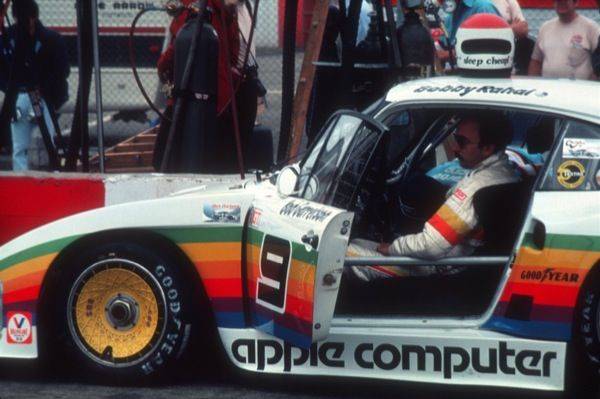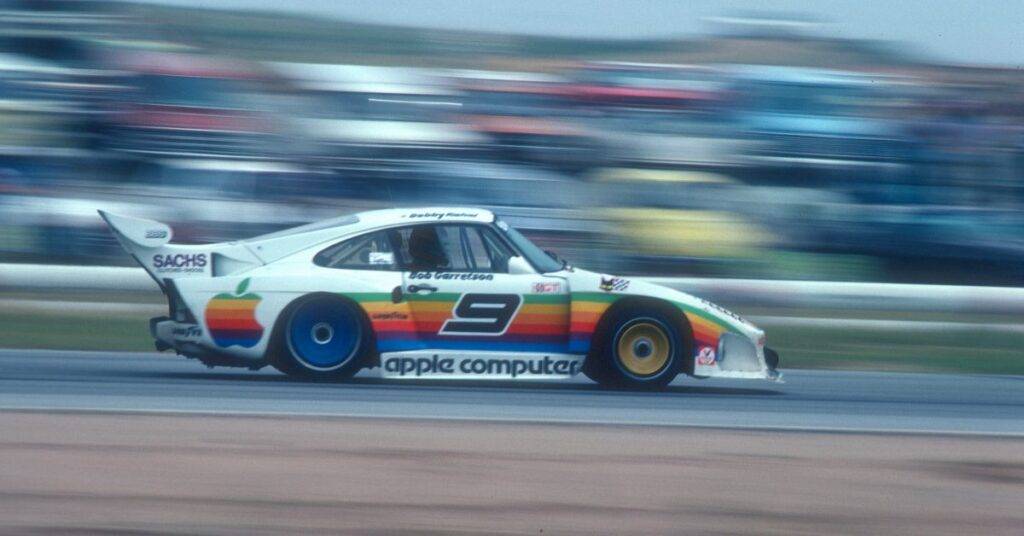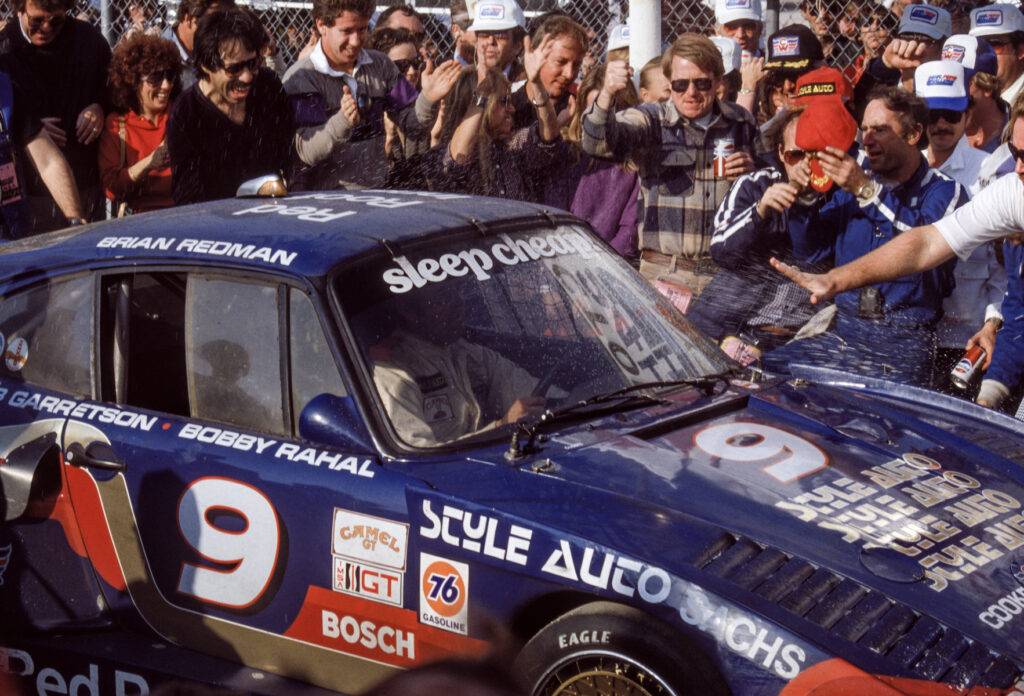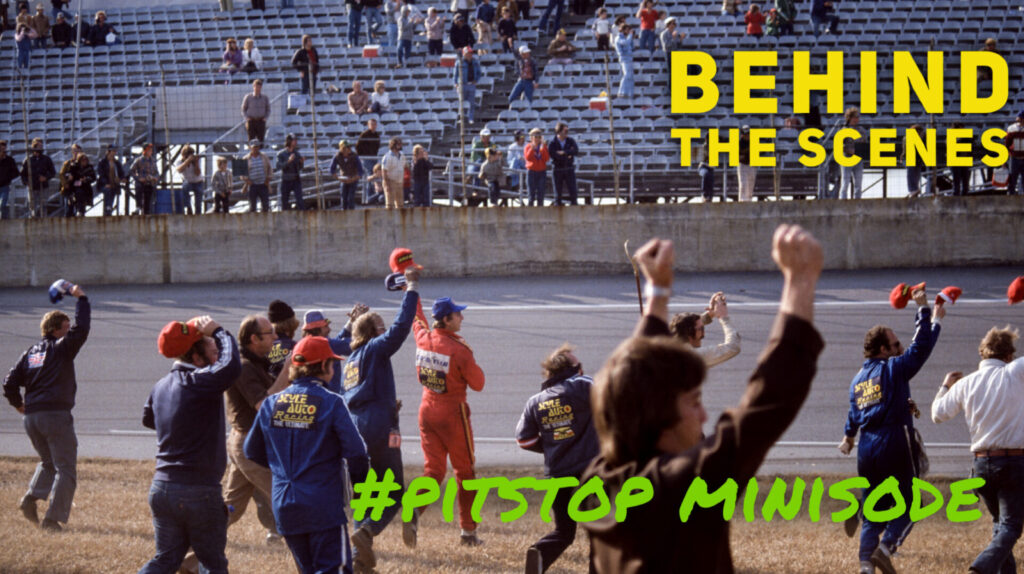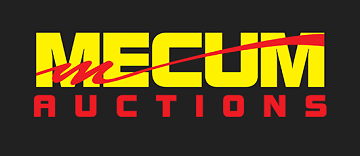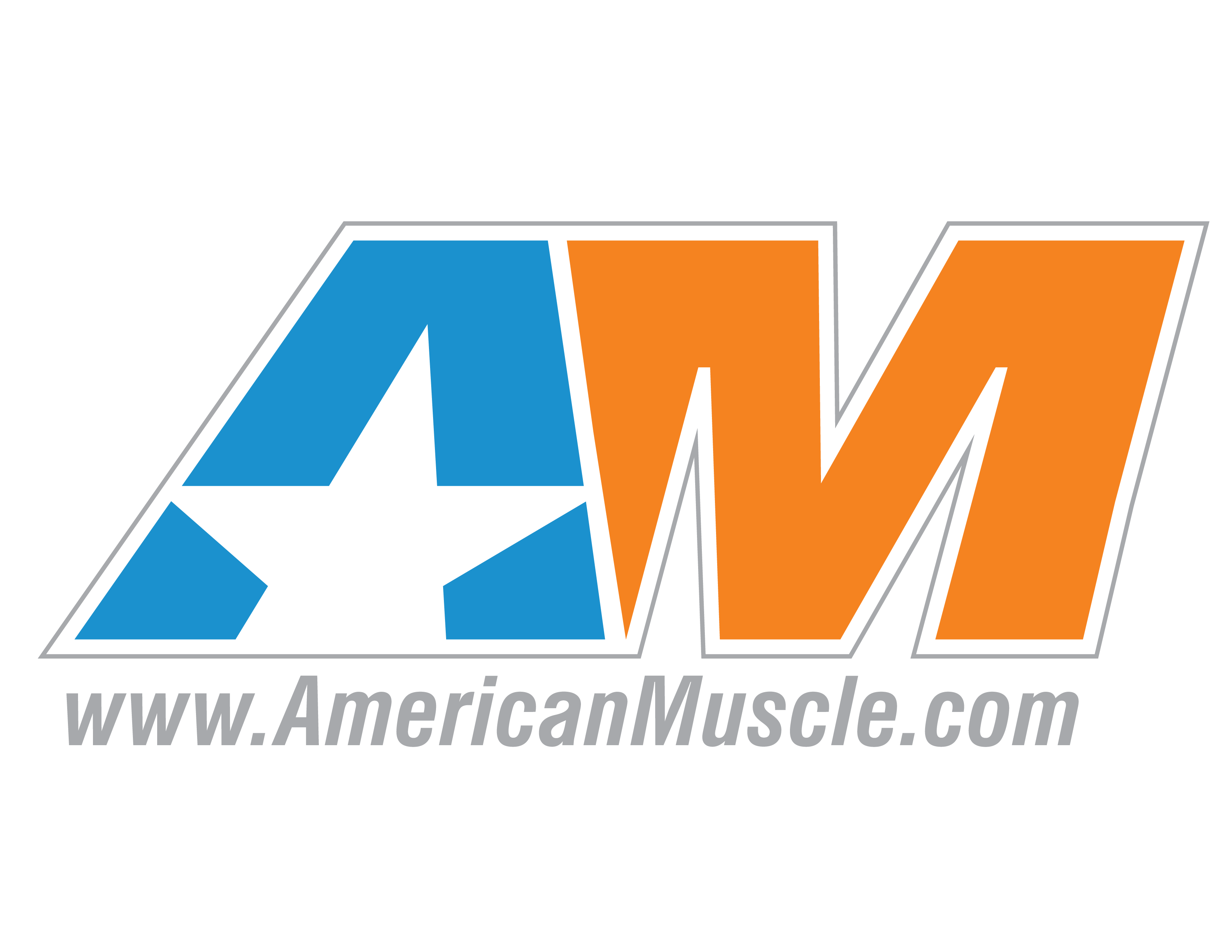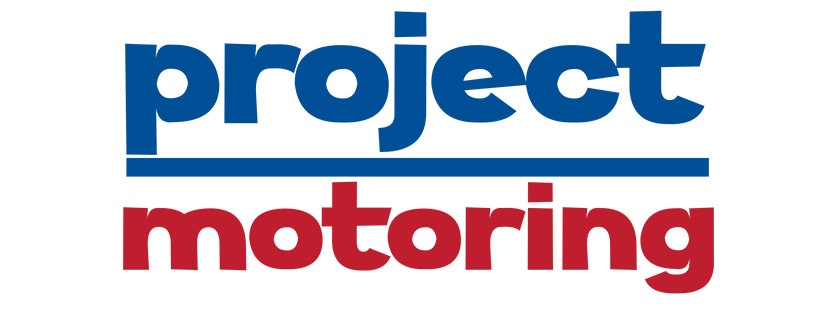Being the owner and driver of a sports car team during the heyday of sports cars racing in the late ‘70s and early ‘80s can be challenging, but also very rewarding.
Competing part-time in both the World Sportscar Championship and IMSA GT Championship. During 1978 he accomplished a win at the Sebring 12 hours and along with veteran racer Brian Redman and Bobby Rahal, our guest Bob Garretson won the 24 Hours of Daytona. Despite not winning another race that season, He won the first ever awarded World Endurance Championship for Drivers title in 1981. He sold his team and retired from racing shortly thereafter… but that’s just the beginning.
Bio
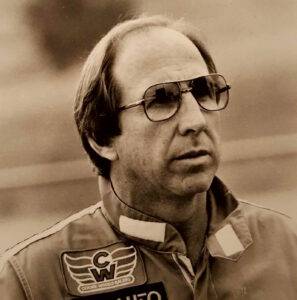
Notes
- Tell us about the who/what/when/where of Bob Garretson, how did you get into cars? And eventually into racing? Did it start as a kid? Did you come from a racing family?
- What’s Garretson Enterprises?
- How did the Apple 935 come to be?
- What was it like racing with and against folks like Brian Redman, Bobby Rahal, Al Holbert, Randy Lanier and others.
- It’s been said that the Porsche 935 was one of the most challenging cars to drive and master; what was the appeal of that car over others, and what was it like to drive? Did you still hold the 935 in the same regard?
- What have you been doing in the racing world since dissolving the team? Did you go back to racing?
and much, much more!
Transcript
[00:00:00] Hello and welcome to the Gran Touring Motor Sports Podcast Break Fix, where we’re always fixing the break into something motor sports.
Being the owner and driver of a sports car team during the heyday of sports car racing in the late 1970s and early eighties can be challenging but also very rewarding. Competing part-time in both the World Sports Car Championship and IMSA GT Championship. During 1978, our guests accomplished a win at the Sea Ring 12 hours, along with Veteran Racer Brian Redmond and Bobby Ray.
Our guests won the 24 hours of Daytona, but despite not winning another race that season, he won the first ever awarded World Endurance Championship for driver’s title in 1981. He sold his team and retired from racing shortly thereafter, but that’s just the beginning. So tonight I’d like to welcome back Mike Carr from the Randy Lanier episode as my co-host who is a huge fan of the golden era of sports [00:01:00] car racing.
And with that, we are both pleased to welcome Bob Garretson to break fix, to tell his story. So welcome Bob. Thank you very much for that introduction. Very nice to be here with you, Bob. Thank you. So Bob, like all good break, fix stories. There’s always an origin. So tell us about the who, what, where and when of Bob Garretson.
How did you get into cars and eventually into racing? Did it start as a kid? Did you come from a racing family? Well, I, uh, grew up in Southern California and my older brother, who is quite a bit older than I am, but he was into going up to Muroc Dry Lake and trying, you know, running speed stuff. So I thought, well, when I got to drive I should do the same thing.
So I fiddled around but didn’t enthused me very much. And so then a high school friend of mine saw a sports car race being run at Hanson Dam in the, in San Fernando Valley. Southern California. So we went to that look at my friend and I said, look at those guys. Get to drive for 20 [00:02:00] minutes and we only get to drive for 20 seconds.
I think there’s a better deal. So got interested in road racing, then went off to university and didn’t do much of anything until I got out of the Navy after graduation. I worked my way through. Overhauling Ford V8 S. My dad worked at Warner Brothers Studio and he would find people that needed an engine overhaul.
So I would come home on the weekend, pick up a car, take it home, pull the engine out, tear it all down, send the Lockton heads and stuff out to the vendors to grind the bells and bore the children and all that kind of stuff. I come home the next. And try and get it all back together. And on the third weekend, I would come put the engine back in and deliver the car.
When I graduated from uc, Berkeley, I went to work for Hewlett Packard. When I was working at HP Silicon Valley started to go at a party one night, a guy telling me about, he was starting a new. Chip manufacturing company. And so I [00:03:00] jokingly said to him, well, if you need a mechanical engineer, let me know. Oh.
And he called me up the next day and hired me. So I got in on the ground floor of Silicon Valley, was lucky enough to invent something that every chip maker needed, patented it and all that kind of stuff. Now I had money to play with and goal racing. So that’s what one of my close friends is. Another name you most likely.
Chuck Forge, he had the Johnny Von Newman car and we got to be friends and he let me drive it a few times and, and I got hooked. But by then I had acquired four children and things like that. And my wife said, I don’t think it’s a great idea for you to be out road racing. So I said, well, you know, okay. She said, I don’t mind if you’re the only one on the track, you know, not competitive wheel to.
Racing. So I took off and started doing hill climbs and auto crosses and things like that. And you’re in your twenties at that point, I presume? Well, thirties almost. But along about then, [00:04:00] one of the guys I used to compete against with at Porsche parades and stuff like that, was a guy by the name of Dick Barber, which I’m sure you all know.
You know, we used to talk and I would go to Laguna Osaka for example, and I’d see him and he’d, I’d say, Dick, you ought to have Garrison Enterprise prepare your car. He says, no, no, no. I have a great mechanic and all this stuff. I said, all right, it’s fine. At Laguna Osaka, he d nfd. So that’s why I suggested he ought to have us take care of his car.
So next time I saw him was at Sears Point. Same thing happened. Well, he got pretty ticked off at his people and told him to take the car down to Mountain View where our shop was. So we started preparing that. Well, the first race it went out to run was the finale at Atlanta. Of course, wouldn’t you know in practice something happened And cut.
Here I am saying how wonderful we are and all that. Well, turns out that the Porsche truck was there and I could get the parts and he didn’t fix it. And he finished the first race in these 9 34 and a [00:05:00] half. So next year he bought a new 9 35, said to him, he said, Dick, you ought to let me drive the spare car.
And he agreed it. I said, if I’ll, you can drive it as long as you’ll drive with renter rider that pay sit in. The first race was the 78 Seabring race. Brian Redmond was just recovering from his big formula 5,000 accident. Joe Hoppin was running for racing in America, and he convinced Barbara that, you know, I guess paid him some money, of course, to put Redmond in the seat with me, which is fine.
The owner of the Seabring Track was the third driver, and so we went off and uh, as the night went on every. Stroke and stuff like that. And, uh, here we go, win the race. So that was kind of an exciting start and I didn’t race many races after that. I did Lama, which I crashed on the Mulan straight at four o’clock in [00:06:00] the morning.
Uh, didn’t really get serious as far as I was concerned about racing until the next year when we ran the whole season. Did you know Fine. Didn’t win any races. And in my whole career in imsa, I only won two races. So one of ’em was Daytona and the other was Seabring. So we went on and ran and prepared the sax car for Barbara up through 19 80, 81, Barbara quit racing.
So I was. Left with what to do, and there was another team of Roy Woods and Cook. Brian Redman came to me. He said, look, a new car coming over, new Lola, which he is supposed to drive. He said, uh, I want you guys to prepare the car. The car wasn’t ready for Daytona and the car wasn’t ready for Seabring. And finally it showed up at Laguna.
We brought the car down from Mountain View and ran it. Bobby Rehaul drove the 9 35 at that race. Of course, the Lola T 71, the race, and then [00:07:00] Brian went on to win the IMSA Championship. But at Lamar in that year, I drove with Annie Charlotte Verne and Ralph Kent Cook. And we got in a big fight over some stuff and I was on my own, but my car that we drove at Lamont, so I just went and carried on on my own going to the races I could afford.
I was, you know, not in the big financial position like those guys cook and stuff. And so I finally had to give up in about August. I just couldn’t afford it. I get this telephone call from Jurgen Barth at Porsche. Jurgen says, Bob, you come into Brand’s Hatch. I said, why do I want to go to Brand’s Hatch? He says, well, you’re leading in the World Championship.
You’ve gotta come to Brand’s Hatch. Word got out that some of the guys that I’d driven with, one of them sponsor was flying Tiger. And he convinced flying Tigers to fly the car to England and back. [00:08:00] All the crew guys, I said, I can’t only take a couple of you. And they all came on their own and stuff like that.
And we made it over there and we finished second in the race, but group C would had been formed, so they ran group C cars and. Group five cars, uh, four are driven by a couple. Formula One guys won the race, but we finished second and won the World Championship. Winning the World championship and then having and going through a divorce.
I moved to England and that was, that was it. I wanna talk to you about your approach to choices. In terms of what races you entered, they had sort of a manufacturer’s prize going on and privateers were racing a set of races. And then the, the makers were racing a different set of races focusing on winning that Maker’s Trophy.
And it seems like it added up to you not only winning the season, but assuring your place in. FIA Hall of Fame on a [00:09:00] limited season of select entries, maybe half the entries were in US and half the entries were in Europe. Which did you focus on? I only did six races out of the ten five in the United States and one in Europe when it brands hashed the finale.
But you know the old adage, you gotta finish the win. We finished every race. That was the goal. Another thing that struck me as unusual is Lancia, as the maker won that. Over Porsche and other manufacturers. I’m confounded as to how that happened. The car that beat us at Brands Hatch was a Ford. It was a group C car, not a group five.
This is the thing that kind of upsets me a little bit, is that the race was for the World Championship in endurance racing. Yet they loud cars that weren’t in that championship to compete. And a group C car is gonna beat to 9 35 every single time, especially if you’ve got two Formula One drivers sitting in it and have tested it and all that kind of stuff.
And I just [00:10:00] felt that we kind of got cheated a little bit in the quote glory that the team and the effort and Porsche and everybody else put forth. Yeah, we’d won the World Championship, but the World Championship really didn’t. A big deal until all the cars were running Group C cars and Jackie Hicks was my successor.
And then, you know, goes on and on and on from there. You just laid down an immense amount of information. Where I want to go back to is how you had a wife who told you that she didn’t want to see you doing wheel to wheel, but you had a race. That was better than the shops that were working on competitors cars.
Behind all this is Garrettson Enterprises. So let’s talk about what that is, its history, what it’s all about, and how that was fueling basically your racing career. I had a 3 56 Porsche. And for Station Wagon , it’s the introductory drug . Yeah. Right. Well, when I was telling you about this SEN Dam race and wanting to go get a [00:11:00] sports car rather than a dragster, the car I wanted to get was an Austin Healy.
You old Mark two. I had one all lined up to buy. The guy I was gonna buy it from died and his wife sold the car trying to get rid of before she contacted me. Anyway, when I was in the Navy, I went back to a homecoming. Event at the fraternity house and met a guy that I’d gone to school with there. We got talking about cars and I told him, well, I’m trying to buy an Austin Hill.
He said, ah, you don’t wanna buy an Austin Healy. He said, come with me. We go outside and there’s a little 3 56 coop sitting there. An early model of, uh, not even an a, he said, come with me. We’ll go for a ride. Well, that, that was it. I went after that ride, I had to have a 3 56. I saved everything up. And in January, 1958, I bought a 57.
3 56, and that’s where I started having fun driving lot used to autocross and hill climb all the time. And this comes [00:12:00] right at the heels of the whole James Dean situation with him bringing the 3 56 into the popular view of. You know Southern California and then he switches to the five 50 and then his untimely death.
We covered this in a previous episode with Lee Raskin, but you’re right in the middle of all this. Was that also a factor in you getting your 3 56 or why it suddenly just was there as a popular car after and I couldn’t, and I didn’t get the Austin Hill. I started looking into, when I got to hp, I said there’s seven Porsches sitting out in the parking lot.
You know they’re gonna need service at night. At home I had four kids and a wife and trying to buy a house and all this stuff. So I had always was short of money. So I approached a few of these guys and you need service on your car and oil changing, all this kind of stuff. So I started doing that at night in my garage.
One of the guys that worked there knew nothing about cars, but was very interesting. A guy by the name of Bruce Anderson, you may [00:13:00] hear that rattling around the Porsche world. So he started hanging around and, and finally one day he said, can you come with me to my parents’ house and have a talk with my father?
I thought, oh my God, what’d I do now? He was getting elderly and wanted to get his sons into some kind of business where they could be independent. So he says, look at, he said, if you’ll open up a shop and do this on a full-time basis. With these two kids, not me working full-time because I’m paying at hp, I’ll finance the start.
So that’s where Garson Enterprises started. We grew out of a one stall to two stalls, to four stalls and a industrial complex. Then when my mother passed away, my brother and I built a purpose building with seven lifts, a Dino room and all this stuff, and started working on preparing race cars, and that’s where it all got going.
This whole thing with Barber started and after he agreed to bring the car down and stuff like that, we [00:14:00] decided that, look, we can’t work on race cars in the shop designed to run for street cars, doing everyday service. So we put a hole in the fence in the back and there was an industrial site behind us and we rented a couple places there and that’s where Garrison Racing was.
And we kept the name Garrison Enterprises on the cars and stuff like that to advertise the street. Head of technology at Google. You know, at some point he, uh, found himself with some money to do some racing, which good for him. The funniest thing was, I don’t know if you are aware, but Steve Jobs had a 3 56, didn’t run, but he had a 3 56 and Bosniak had a 9 28 he used to bring to us for service.
The, uh, head of, um, public relations or whatever it is, also had a Porsche of nine 11 or some. brought it to Garris Enterprises for service. And so one day guy was coming to pick his car up and Steve Jobs drove him [00:15:00] to the shop. And so I went up to him and I said, you know, you guys ought to sponsor a race car.
Steve says, no, no, no, no. Wait. We, you know, what’s that gonna do for me? Well, When Wazniak came back to pick up his car. See, I didn’t work there. I never worked at Garris Enterprise cuz I was too busy in the, in the chip semiconductor business. But I used to come every day at lunchtime, every day at the end of the day, spend a couple hours there getting everything working right, and met these guys and so Okta Waac about it and he was a little more enthusiastic.
Well, the advertising guy. Hey, I think it’s a great idea. We’re opening a new campus in Cupertino. I think it’d be just a absolute barn burner if we had a 9 35 sitting out there on the apron, you know, with all the apple colors. So I don’t know if you ever saw the apple car, but in 1980 it was sort of Adidas looking.
9 35 running. So that was [00:16:00] a great event. And that’s the car, everybody that Everett says, oh, you drove the Apple car? And I said, yeah, I drove the Apple car. Do you know how many tributes to that car have been built over the years? Oh no, I don’t. But there’s a whole bunch of ’em in Europe and. Anyway, the guy that owns my 9 35 now, you’ll know the name Adam Corolla.
We’ve heard of him. He’s a comedian, but he he’s a nice guy, great guy. Matter of fact, uh, at the last Monterey Historics is in, uh, August. I asked him, I said, this year’s races was sponsored by lama, the 24 hours of lama, because they were trying to get people to come to the hundredth anniversary of the race.
They were gonna have demonstration laps. They were trying to get all the drivers and all the cars that ever raced at LAMA come over there. So anyway, I a approached Adam. I said, Adam, would it be possible in these demonstration laps? They’re supposed to be following a PACE car around and stuff like that.
No racing or anything. I said, would it be. [00:17:00] To drive the 9 35. I mean, I, first of all, I had to get permission to my wife cuz she doesn’t think I should do it. But anyway, she finally agreed and so he let me drive the car, which I mean, I can’t believe I drove that thing competitively. I mean it, well of course I’m 89 years old now, so just unbelievable.
Just fantastic car. It’s been said that the Porsche 9 35 is one of the most challenging cars to drive and to master. Tell us about that experience, what you can remember of driving it. What’s the appeal of that car over others? Is it one of the best nine elevens ever? If you think about it in comparison, do you still hold the 9 35 in the same regard today?
Knowing what you know about all the modern Porsches, how did it compare to the nine 50? Well, it was 9 56 was of course a whole different car. It was a ground effects car 9 35, you know, it had aerodynamics. We didn’t have any ground effects. I never drove a 9 56 or a 9 62, so I can’t really comment on that.
But the [00:18:00] beauty of the 9 35 was how much of a beast was it? There was no finesse in that car. You did it with brute force. Ignorance and it just, I mean, I was absolutely amazed when I drove this car this year and how fast it was. I mean, the acceleration was unbelievable when in the day, you know, didn’t have that kind of an impression on you.
But coming back almost 50 years later, uh, 40 years later, anyway, it is just unbelievable. And the other thing that was in interesting about the car, it had a locked rear. . So you had to, you know, meet your down shifts and everything or else got squirrely and stuff like that. And what I noticed was driving the car this time when I accelerated it pulled to the right and when I decelerated it pulled to the left.
Come to find out that Adam Corolla and his mechanics that own the car know nothing about tires stagger. So with two different size rear tires, You’re going to get, you [00:19:00] know, different actions on the acceleration and decelerate. So anyway, that’s one thing. They’re getting straightened out because he kept complaining.
He kept telling me, what do I do to stop spinning out? I spin out, well, I think this is what happens. He lets off on the gas and all of a sudden the car jerks one way and he isn’t prepared for it. He’s not a competitor, active driver in anything but historic races and stuff like. And most of the people that drive the 9 35 s now, there’s a special LI Limited slip differential made just for the car and they put that in.
So they don’t have this problem. But can we talk about 1981? Sure. So you’re with Redmond. It sounds like he may have been the motivating force to get you on track with him. Was that right? No. The way Redmond came along with, I told you about Seabring in 78. Yeah. Somebody came to Joe Hopin and. Can you get Brian Redman a ride in car?
He wants to start coming back. This was after his big accident in Canada, right? [00:20:00] And so Barbara said, well, yeah, how much are you going to subsidize me for doing this? And it was just at the last minute basically that he joined the team. So it was myself and Redman. The guy that owned Seabring at the time, Charles Mendez was the, you find yourself in your mid, late forties.
When I won the championship in, in 81, I was 48 years old, and I think Redman at the time was probably about 45. Yeah. And then you’ve got Ray Hall on the team, and he’s a 28 year old kid who has found some success in F1 and F three and his career is just taking off. How did you hook up with him? Well, here again at sea.
It wasn’t 78, but it was one year at Seabring. He had just lost his ride with Wolf in Formula One when Wolf went broke. And so he didn’t have any ride. And so he came down to Seabring looking around, talking to teams and you know, asking to, he’d get a ride with him and stuff like that. He’s stock walking, [00:21:00] he’s looking for a job.
That’s great. And Barbara said, yeah, you can drive. And so that’s how we got together. And then Bobby and I. Yeah, even though there’s quite a difference in race, became very close friends. My wife and I and Bobby’s parents were great friends. We used to go back and stay with him and do things all the time, and Bobby’s dad decided he wanted to run the mil Amelia, you know, the re repro of the re Amelia.
So he asked me to get him a car, so I got a five 50 spider for him. We ran that three years in a row. You know, things like that. That’s, Bobby and I are just great friends. Uh, in France, they run a thing called a Tour Auto, which is a tour around France ending up and doing race circuits along the way. So Bobby and I, reho and I did that.
Three times and one year. The last year we did it, we did it in a three liter RS nine 11. So one of the circuits that we’re gonna drive is the Oldner Berg ring. And I don’t know how [00:22:00] long it had been since Bobby had driven the course, but he still knew the Turner. He says, okay, we’re we’re gonna come around the corner.
Here it was a lefthander and he says you’re gonna see all kinds of cars over in the grass up against the guardrail on the outside . Fair enough. We come up there and come flying around the corner and there are all these cars sitting there and you know, he still remembered after 10 years before he, it was the last time he raced and still remembered all this stuff.
You know, just so simple for him. You always knew that he was in control. Such a. Personality doesn’t have any errors about how great he is and stuff like that. He just, it’s just Bobby. Nowhere near the driver. He is, but he’s unbelievable. Were you driving against the Randy’s and the Bob Wallacks and the other drug dealers in the early eighties who would buy a 9 35 at Lamont with a bag full of.
You mean like, uh, Preston? Yes. We spent some time talking [00:23:00] about Preston Hen, well, Preston, he was actually a nice guy, but, uh, just, well, John Paul Sr. Was the guy that was the real bad actor and I felt sorry for his son because he had to live under that cloud, but did all right. Brandy Lanier told us that John Paul Jr.
Was the faster of the two. Oh, definitely. John Paul Sr. Was not that fast. He. One of Barbara’s cars at Talladega. Well, I didn’t drive at that race, but Barbara was faster than John Paul in our car. I don’t know if in his own cars and stuff like that what he had, but, and then I was thinking of the Wittingtons.
Oh, the Wittingtons. Yeah. They now Wittingtons were good drivers. They were competitive all the time. I guess if you can fly a P 51 Mustang, you can drive a sports car, especially at 9 35. I mean, they’re probably on the same scale, right? Yes, that’s right. I think a P 51 might be better. A 9 35 . Yeah. I don’t think you can spin out as fast in a P 51 as you can in a 9 35.
[00:24:00] You can’t pull over, but the ground’s pretty far away. . That’s right. Yep. Yeah, it’s gotta be a big jump going from Autocross and Hill Climb right into sports car racing into Camel GT and imsa. . Back then it was a little bit more open. Everybody was building a better mouse trap, trying to build the best car, trying to one up each other and whatnot.
What was it like out on track, not just in the 9 35, but some of your competitors did? Were there clear advantages and disadvantages between the cars? What was the competition like back then? Were, you know, we’re talking about some of the drivers right now, but even in your short time, did you have some rivals?
Did you make friends? Like what was it like in those. That era, everybody was friendly. I mean you, you didn’t fear talking to anybody that they were going to get any secrets or anything like that. I think the biggest difference that I found in the racing, and that was the preparation of the cars. There were guys that was spending tons of money, that cars were.
Terrible. Put a [00:25:00] Bob Wallick in a car and it doesn’t perform like somebody else’s car that he sits in. That’s what we always prided ourself on, is that what we tried to make it as good as we po as it could possibly be made. And we did lots of little things that just made driving it easier. And we were the first ones to put on big inter coolers and I mean, we built special exhaust systems because.
Porsche one was made out of 3 0 3 stainless and they would crack and break and stuff like that. We made ours out of 400 series stainless because it doesn’t transfer as much heat, therefore you get more turbo action and you know, little things like that, equal length pipes. Whereas the Porsche one was three into one.
Into, you know, we felt that you had to not only outdrive ’em, but you had outsmart ’em well and the poor victim of that. He’s dead now, so he can’t come after me. But poor Bob Aen, he spent tons of money trying to get things [00:26:00] done. There was always some screwball thing going wrong with his car. This is the 9 35, not when he got into the 9 56 or whatever it was.
Anyway, that’s just one man’s opinion. Anyhow, as you were coming up through your driving and then you got onto the big stage on in IMSA and the Camel GT series, Did you have any coaches? Did you have mentors? Did you have other drivers that you were just chasing them around and learning from them on the fly?
Like how did you develop yourself as a driver going from otros and hill climb to pro racing? Well, I think. In all kinds of racing, the objectives the same thing you’re trying to win. You either teach yourself or you find out somehow what to do. And I think that in my case, it was never driven a 9 35 until Seabring in 78 you got in the car and the way we went, I don’t know, it just sort of came natural, I guess.
Were there any drivers that you looked up to? I mean, on that roster of names, when you look at those years [00:27:00] specifically, you race, you’ve got people like Chip Ganassi, you’ve got AJ Foyt, you’ve got David Hobbs, Hurley Haywood, Peter, Greg. I mean, you were rubbing elbows with all sorts of famous drivers from that era.
Were there guys that you were looking up to or that again, you were chasing around the track, trying to learn from them on the fly? One of the guys that I thought, Absolutely fantastic. Hurley Haywood. Yeah, I mean, you certainly looked up for guys like Wall and I got to drive twice in the 9 35. I got to drive with Rick Mirrors and Johnny Rutherford.
They were teammates at Watkins Glen two times. Did you run with any other indie winners? Yeah. Right. I mean, you got Ray Hall. Yeah, no, those are the only ones. I didn’t drive with him, but Ralph Stalin drove a couple times with Barbara and, and, and the other car. He was a guy that thought he was the greatest.
You know, we were at Seabring one year and my first wife was with me. Dolan fancied himself as quite a tennis player. [00:28:00] My wife was quite a tennis player too, so they went and played and she beat him. And you talk about a miserable guy for the next, seemed like the whole time from then on, but just very interesting guy.
I couldn’t feel like we were on the same wavelength most of the time. Wallock was nice guy. He’s quiet. You had to almost pull the words out of him, you know, a shame of what happened to him. What about Mike’s number one guy, not Randy, but Al Hol. Yeah, Al was, he was great because here again, another guy that thought about things to do and didn’t just get in a car and drive.
I mean, he was involved in the car itself. I’m from Doylestown, and that’s where AL’S from and his father Bob, they kind of had a big role in Porsche factory racing in America, going all the. It was really fun to go to different tracks. This is how I know of you, because you were racing against him at places that my family would [00:29:00] visit with the Holbert family.
The loss of Al was just huge, but ignoring that for the moment, watching him race against you, watching you beat him, watching Randy Lanier beat him when he’s driving a factory, he sponsored 9 62. Was amazing. Would like to try driving one. It’s what engendered my love for this sport. Well, one of the things about Porsche is that the Porsche world, you’ve got friends no matter where you go in the world.
I, I don’t know if any other car make has the camaraderie and the, the Porsche world has. You think about Germans being cold and hard and rigid and all this kind of stuff, yet the factory is open. Well, once you’ve like, I was fortunate to work with them, but it’s a totally different atmosphere. I had a Ferrari for a while.
I used to run the Virginia City Hill, climb with it, and nobody, unless you’re somebody or mm-hmm , you got the latest, greatest thing. Nobody really wants to talk to you. Porsches are not [00:30:00] that way. It’s uh, a different life. You try to explain that, like to my second wife when we got married, she, what the hell?
You know, and the next thing you know, she’s immersed in this thing. And, uh, we’re, it’s just unbelievable. Anyway, this brings up a great question, Bob. So since you’ve left racing, have you really left racing? Where does the story of Garretson Enterprises go? Is it still in continuation today? You mentioned the Emil Amelia, are you still at, I mean, up until this point, are you, have you been active in the racing community even though not being on, you know, the big stage at M S A?
No, no, I haven’t. As you, I don’t know if you are aware, but I did crash at Lamont first time. I raced there four o’clock in the morning. Two more laps to go on my stint. I’m going down the Mulan straight and come to the kink, which they don’t have anymore. All of a sudden the rear end starts to come out and you forget how fast you’re going and way over corrected.
You know, it went the other way. [00:31:00] And of course I crashed into the barrier and the car flipped over. I counted seven times that we went over, but ended up in all four wheels. And even though he wasn’t a teammate, Brian Redman. And asked if I was all right. Wow. And uh, yep. I don’t know. Have you ever driven at LA Mall?
But it’s quite an experience and the thing that will always be in the back of my mind is when it rains over there you go, flying down the Moosa Street, we’re doing 200 miles an hour. Other cars are maybe doing 120, 140. It come across this cloud and it looks like a heavy. You pray that the guy in the slow lane that you’re gonna pass is gonna stay there.
I mean, you go into the cloud and you can’t see a thing until you come out the other side. And it’s quite an experience. I would’ve managed to walk away. The hardest thing on the old situation was getting out of the damn car because the doors wouldn’t open. The didn’t think that there was no [00:32:00] windshield in the car.
It could collided out that way. finally, the, uh, corner workers were managed to bend the window. Down because, you know, we had to have nets on the windows because we were running ems a class, so I could climb out through the window and didn’t, uh, get hurt at all. After, uh, uh, 81 I did, I think you did into some part of 83.
I drove Daytona in 82, and then in 83 we converted a car from 9 35 to basically a nine 30. It raced in as a G T O car rather than a group five car. I drove it a couple times, but just didn’t have any enthusiasm for them. Uh, are you satisfied having left the, uh, arena when you did, you had, had such success and then you, you moved on?
Oh yeah. No, I, I mean, I quit on top and that was very satisfying. And I, you know, I’m not sorry at all that I. Stop. I tried to help [00:33:00] various people along the way. Just like I said, Brian Redman insisted that I prepare his Lola, first of all, and then an English guy came over and became the crew chief finally.
But what broke that situation up was we took Lola T 70. And put a 9 35 engine gearbox in the car. Problem was, we were running out of time. The car was supposed to debut it. Uh, Lamar. Well, we got to Lamar and had never been on the track before. Went out there and we couldn’t get any boost. It wasn’t getting to the engine.
The problem was, is that the framework that supported the inter cooler was not sturdy enough. So, Pressure buildup. It opened gaps in the gaskets, and so we started losing boots, so it never did run at Lamar, and that was the straw that broke the camel’s back as far as me and Cook was racing. And so I had to go out on my own from there on.
So that’s what happened. The rest of the history of [00:34:00] Garretson Enterprises, Is it still around? Does did it continue on or did you close that chapter too? No, what, what happened to Garrison Enterprises was I had sold my semiconductor business as a company that bought it, wanted me to stay with them and run the business.
Keep it going the way it was or expand, whatever happened. Well, I was still racing. It was 81 or 82 I guess. I still playing around stuff like that, and these guys came to me and said, look it, we don’t like you running around the world doing all this stuff. You’re supposed to be running this business. I said, well, business is running.
I’ve run it the way I’ve run it all along. What’s the big problem? They said, well, if you don’t stop, you’re gone. I said, fine. Well, I’m gone because I had a lifestyle and that’s the way I wanted to live. What happened was I just said, okay, I’m gone take my money and run, and I went over and basically took the English office over [00:35:00] and competed with the other company is cause the EU had started then so we could supply from England.
All the stuff that we used to have to have offices. Germany and France. So Garrison Enterprises was functioning. I’d come back three or four times a year, more or more and find out what’s happening and all this kind of stuff. Well, I came back one trip and the assistant bookkeeper came to me and said, you better look at these things.
We don’t have any cash. Something’s wrong with the money situation. After doing investigation, found out that the head bookkeeper was embezzling money because she thought she was a professional bridge player and was gambling on bridge. And then the two brothers that were business partners said, you know, you are not here to dice and stuff like that.
Can we sell the business? They had a friend that had a Porsche, a customer who was a big banker, and he wanted to buy the. Business. So to me, having to come up and get us outta debt and all that kind of stuff, I said, you guys [00:36:00] sell it. And I left. My brother and I kept the building and they paid the rent on it.
So when I left, I had left my association with Garrison Enterprises. They made it run for a year and then went. Belly up, and so my brother and I sold a building to the Dotson dealership across the way, and Garrison Enterprises was no more. Knowing what you know now, looking back over your career, your wins, you know all the people that you’ve met for young aspiring racers, That are coming up through the system now.
Do you have any advice, anything you can pass on to them, words of wisdom, anything you’d like to share? Well, I think that the young kids today, the drivers are extremely talented, but I don’t think they have a complete understanding of the mechanics of what’s going on. and why they do things and why things happen when they do certain things and stuff like that.
And I think that’s part of the stuff. I don’t think I had any talent compared to half the guys that I raced against, but I think that I was [00:37:00] able to, some cases, outthink ’em and stuff like that. Looking back over the course of your life and career and your racing experience and your success in business and you know the people that you’ve met and the interesting life that you.
Where does racing rank made great friends with a lot of people and some people just unable to make friends with they, you know, they thought, who’s this kid that thinks he’s a, a race car driver? I, I mean, I admit and, and I’m not the talent that half the guys I race against are, but the thing is that we managed to do what racing’s all about.
We managed to win and do things. So seems like there’s more ego in things than there used to. I, I don’t think that’s true. I think there’s a, it’s just expressed differently. That’s all. It seems like you got in and then you got out and you drove an epic car. Absolutely. You did some amazing things with it.
I dunno how you walked away. It answers some questions, it leaves more questions. But you guys must have some more [00:38:00] questions, . Sure, Mike does. I don’t wanna keep you up all night though. You know, , I, I could talk to you for hours. It’s a real pleasure to talk to you, so thank you, sir. I have to second Mike’s sentiments there.
I mean, I can’t thank you enough for coming on here and sharing your journey into the sports car world coming up the way you did, and then just gracefully exiting, as you said, at a high point in your career, having that win at Seaham, the win at Daytona, and it’s just, Wow. That’s all I can, all I can keep thinking is wow.
But then you’ve done so many other cool things since then and worked on cool cars and, and made so many different lifelong friends between the Ray Halls and the Redmonds and, and all the other folks that you mentioned. I mean, it’s just again, thank you Bob. Anything else before we let you go? Or Mike, any other questions you want to ask?
I’m good. Thank you. Well, if you think of anything you want to ask, don’t hesitate. Thank you so much, Bob. Well, you’re very welcome. Enjoyed it myself. Thanks Bob. Take care. This episode has been brought to you in part by the Exotic [00:39:00] Car Marketplace. Founded by Break Fix guest William Ross. He provides private client services to discrete Ferrari and Porsche buyers, as well as sellers.
With experience and access to the most desired vehicles in the marketplace, William can source the perfect Porsche or Ferrari you’ve been looking for. To learn more, be sure to check out www.exoticcarmarketplace.com. Additionally, this episode was supported by the International Motor Racing Research Center in Watkins Glen, who provided the factual data as well as racing results and photographs from their archives, which can be seen in the follow on article.
Alongside this episode, you can learn more about the Im Rrc by visiting www.racing. Dot org.
If you like what you’ve heard and want to learn more about gtm, be sure to check us out on www.gt motorsports.org. You can also find us on Instagram at Grand Tour Motorsports. Also, if you want to get involved or have suggestions for future [00:40:00] shows, you can call or text us at (202) 630-1770 or send us an email at crew chief gt motorsports.org.
We’d love to hear from. Hey everybody, crew Chief Eric here. We really hope you enjoyed this episode of Break Fix, and we wanted to remind you that GTM remains a no annual fees organization, and our goal is to continue to bring you quality episodes like this one at no charge. As a loyal listener, please consider subscribing to our Patreon for bonus and behind the scenes content, extra goodies and GTM swag.
For as little as $2 and 50 cents a month, you can keep our developers, writers, editors, casters, and other volunteers fed on their strict diet of fig Newton’s, gummy bears, and monster. Consider signing up for Patreon today at www.patreon.com/gt motorsports. And remember, without fans, supporters, and members like you, none of this would [00:41:00] be.
Learn More
Consider becoming a GTM Patreon Supporter and get behind the scenes content and schwag!
Do you like what you've seen, heard and read? - Don't forget, GTM is fueled by volunteers and remains a no-annual-fee organization, but we still need help to pay to keep the lights on... For as little as $2.50/month you can help us keep the momentum going so we can continue to record, write, edit and broadcast your favorite content. Support GTM today! or make a One Time Donation.
Historical Records (provided by the IMRRC)
For more information on Bob Garretson and other drivers from the Golden Era of Sports Car Racing, look to the International Motor Racing Research Center (IMRRC) for all sorts of historical data and photographs, like those provided in this article, on all sorts of races and drivers! Check out Bob’s Profile on the IMMRC.
- 99A46 IMSA Facts & Figures 1971 89 IMRRC 001
- 99A46 IMSA Driver Facts IMRRC 001
- 99A46 Analysis Of IMSA GT Drivers 1971 89 IMRRC 001
There’s more to this story…
Some stories are just too good for the main episode… Check out this Behind the Scenes Pit Stop Minisode! Available exclusively on our Patreon.
Where is it now?
Bob mentions on this episode, that his Apple 935 is owned (and vintage raced) by comedian and car enthusiast Adam Corolla. Bob continues to work and coach Adam on how to tune and drive this car; and Bob was able to reunite with the Porsche and drive it once again at the 2022 Monterey Historics at Laguna Seca Raceway.
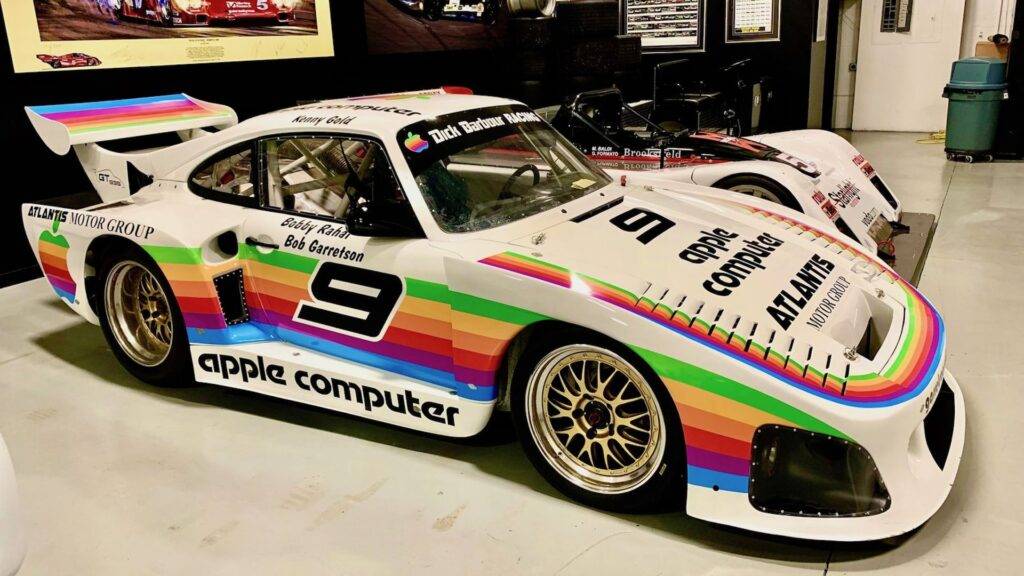
Guest Co-Host: Mike Carr
In case you missed it... be sure to check out the Break/Fix episode with our co-host.And returning with me to co-host this episode is Mike Carr, who some of you might remember from our Randy Lanier episode.


